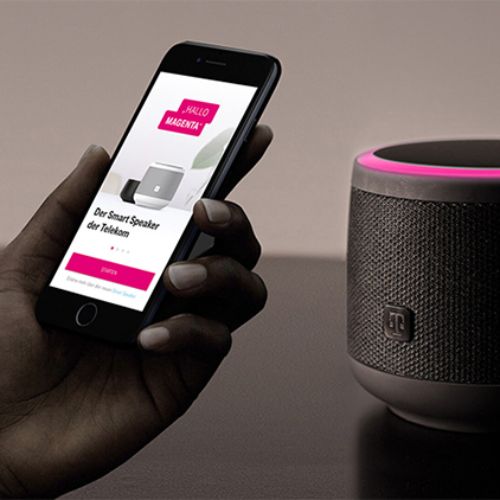Uncategorized
Maximizing Your Savings: Smart Financial Strategies for Purchasing Home Electronics
Smart home technology has revolutionized the way we live, making daily tasks easier and more efficient. From smart thermostats that regulate your home’s temperature to voice-controlled assistants that manage your schedule, these devices offer convenience, comfort, and security. However, the price of upgrading your home with advanced electronics can quickly add up. To avoid breaking the bank, you need a solid financial strategy when shopping for smart home electronics. This article will guide you through key tips to make smart financial decisions while upgrading your home.
1. Set a Clear Budget for Your Smart Home
Before diving into smart home upgrades, the first step is setting a clear budget. Assess your financial situation and determine how much you’re willing to spend on electronics. Consider the devices you need versus those you want. This not only prevents overspending but also allows you to prioritize the most crucial devices that align with your budget.
When setting a budget, take into account potential additional costs such as installation, maintenance, and increased energy usage. Some smart devices may come with long-term costs like subscriptions or required app updates, so it’s vital to factor these into your financial plan.
Key Takeaway: A clear budget helps you avoid impulse purchases and ensures your spending aligns with your financial goals.
2. Evaluate the Return on Investment (ROI)
Smart home devices are an investment in both convenience and cost-saving. However, some devices offer better returns on investment than others. For example, a smart thermostat can significantly reduce energy consumption, resulting in lower utility bills, making it a worthwhile purchase.
On the other hand, some devices, like a voice-controlled smart assistant, may not offer a direct financial benefit but instead improve the quality of life. It’s essential to weigh these factors before making a purchase. Focus on devices that deliver tangible financial benefits in the long run.
Tip: Look for energy-efficient devices that can help you save on monthly utility costs, maximizing your ROI.
3. Shop During Sales and Take Advantage of Discounts
Timing is everything when shopping for smart home electronics. Major sales events such as Black Friday, Cyber Monday, or end-of-season sales often include significant discounts on electronics. Monitoring sales and purchasing during these peak periods can result in substantial savings.
Additionally, many online and brick-and-mortar stores offer loyalty programs, cashback, or financing options with low or zero interest. Take full advantage of these offers to stretch your budget further. You can even sign up for price alerts or comparison tools that notify you when a product drops in price.
Pro Tip: Always compare prices across different retailers before making a purchase. You can save hundreds by simply purchasing at the right time.
4. Choose Multi-Functional Devices

Another way to optimize your budget is by investing in multi-functional devices. Some smart electronics offer multiple features, eliminating the need to purchase separate devices for different tasks. For example, a smart speaker can function as both a sound system and a voice assistant, or a smart TV can double as a hub for controlling other devices in your home.
When purchasing, focus on products that integrate various functionalities into one, saving money and reducing clutter. This approach ensures you get the most out of each device without spending on redundant products.
Key Takeaway: Multipurpose devices provide more value for money, allowing you to maximize your budget.
5. Opt for Gradual Upgrades
It can be tempting to transform your entire home into a fully automated smart space all at once, but that can lead to financial strain. A better strategy is to approach upgrades gradually, prioritizing key areas of your home based on need and affordability.
Start by upgrading essential devices, like security systems or thermostats, which can provide immediate benefits. Over time, as your budget allows, you can add other devices to expand the network. This phased approach enables you to spread out the costs and avoid overspending upfront.
Tip: Begin with one or two smart devices and build your smart home gradually. This also gives you time to familiarize yourself with each product before adding more.
6. Consider Long-Term Value over Short-Term Savings
While it’s essential to stick to your budget, choosing the cheapest option is not always the best route. Investing in quality smart devices from reputable brands can save you more in the long term, as they tend to have longer lifespans and better warranties.
Low-cost alternatives may save you money initially, but they often come with hidden costs like higher maintenance or shorter lifespans, requiring more frequent replacements. It’s essential to balance affordability with quality to ensure you’re getting value for your money.
Pro Tip: Check for devices that offer software updates and good customer support. This ensures that your smart home technology stays relevant and functional for years.
7. Utilize Smart Devices to Save on Household Expenses

Many smart home devices are designed to help you reduce household expenses. A smart thermostat, for example, allows you to control the temperature remotely, helping to optimize energy use and cut heating or cooling costs. Smart lights can be scheduled to turn off when not in use, further reducing electricity bills.
By investing in energy-saving devices, you can lower your monthly utility bills, offsetting the initial investment over time. These savings add up, making your smart home not just more convenient but also more cost-efficient.
Key Takeaway: Leverage smart home devices that offer long-term savings on utilities to make your investment more profitable.
8. Take Advantage of Financing and Payment Plans
For those who wish to invest in multiple devices but don’t want to deplete their savings, many retailers offer financing options. Zero-interest financing and extended payment plans allow you to spread out the cost of your purchases over time without incurring additional fees.
Before committing to any financing option, ensure you can make the payments on time and that there are no hidden fees. Additionally, financing allows you to upgrade your home without waiting for sales or saving up for months, giving you immediate access to new technologies.
Pro Tip: Always read the fine print when using financing options and ensure that you can make payments comfortably without jeopardizing your financial stability.
Conclusion
Investing in smart home electronics can enhance your lifestyle and bring significant convenience, but it’s important to approach the purchase with a solid financial plan. By setting a clear budget, prioritizing essential devices, and taking advantage of sales and financing options, you can upgrade your home without putting undue stress on your finances.
With smart strategies in place, you’ll not only build a more efficient and automated home but also ensure that your financial health remains intact. Start small, plan carefully, and make informed decisions to get the most out of your smart home investment.
Learn more: Zgladnews fashion


